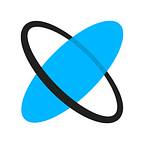Medical software: main types and value
This post is a quick overview of an Abto Software’s blog article.
Medical software is a broad term involving applications, which help healthcare providers operate efficiently. Specialized software is designed to facilitate administrative and managerial processes, accurate diagnosis, personalized treatment, progress tracking, and better patient outcomes.
Medical software includes applications that optimize daily scheduling, for example appointment arrangement. What’s more, some tools are implemented for accounting, analytics, reporting, and even marketing activities.
Healthcare information and technology market trends
Digital transformation across industries is gaining more momentum, in particular in the healthcare segment. Modern innovations deliver value to both healthcare professionals and patients by increasing service quality and minimizing potential inconsistencies.
The recent coronavirus crisis has shown the importance of adopting and embracing computational technology. The lockdowns and other pandemic-related limitations noticeably facilitated the implementation of telehealth and telemedicine, as well as other health-related innovations.
Digitalization revolutionizing healthcare delivery
Healthcare organizations are facing various challenges and limitations when handling day-to-day operations. Forward-looking companies are moving towards specialized medical software to accelerate routine processes and drive customer satisfaction and loyalty.
For mature healthcare providers, data-driven insights empowering operations have already become inevitable. Digitized administration, simplified scheduling, data-driven diagnosing and treatment, and streamlined employee communication and collaboration are driving business automation.
Healthcare software: main types
Digital health is the broad concept marking technology being used to accelerate healthcare-related operations. This comprises mobile health, wearable devices, telehealth, telemedicine, and other related innovations.
Digital health is segmented into the following categories:
- Telehealth software
- Synchronous (real-time)
- Asynchronous (store-and-forward)
- Remote patient monitoring (RTM)
- Digital therapeutics
- Replacement therapies
- Treatment optimization
- Care navigation
- Self-directed care
- Electronic triage
Real-time services are the two-way interaction between provider and patient per audio- or videoconferencing. Store-and-forward services are the one-way transfer of recorded health-related information through portals, email, messaging, and applications.
Replacement therapies means using digital therapeutics to asses, manage, treat, and prevent medical issues. Treatment optimization, in this particular context, means utilizing digital therapeutics to enhance the efficiency of existing conventional therapies by leveraging data analytics, mathematical algorithms, and personalized medical interventions.
What about digital physiotherapy?
Digital physiotherapy is segmented into the following categories:
- Virtual model — an approach where assessment, diagnosing, treatment, and monitoring are conducted fully remotely through specialized solutions, completely eliminating in-person appointments
- Hybrid model — a combination of both personal and virtual components where some integral elements are conducted per videoconferencing and others delivered face-to-face
Speaking about integrated care, it means the utilization of technology to enable straightforward interaction, data processing and sharing, as well as communication and collaboration across different healthcare facilities. Such tools are designed to improve everyday coordination and enhance patient outcomes.
Digital solutions to empower integrated care typically include:
- Electronic health record (EHR) — a patient’s medical history being maintained by multiple healthcare providers
- Electronic medical record (EMR) — a patient’s medical history being maintained by one healthcare provider
- Electronic visit verification (EVV) — a system that verifies the occurrence of home- or community-based healthcare visits
- Personal health record (PHR) — a system specifically designed to be only accessed and managed by patients to maintain data confidentiality
- Electronic patient identifier (EPI) — a unique digital identification being assigned to individuals to accurately and securely match records
Healthcare software: additional features
Geolocation services
Geolocation services can enable patient tracking, particularly benefiting large-scale hospitals and providers. This feature might optimize patient flows, sensibly minimize waiting times, and improve patient experience.
Data analytics
Data analytics can help healthcare specialists make faster, data-driven decisions by obtaining valuable insight. This feature can help seamlessly control resource optimization, better understand patient patterns and trends, and enhance overall efficiency.
Voice and face recognition
Modern-day techniques, for example, voice and face recognition, might accelerate patient privacy and security by ensuring that only authorized personnel can access, review, manipulate, and share sensitive information. This helps maintain confidentiality and compliance with regulations.
Pose detection
Pose assessment and analysis can provide real-time feedback and guidance, as well as other useful features. Pose estimation can help accurately assess and analyze health conditions, create more personalized programs, and continuously track progress to streamline patient outcomes.
How we can help
Abto Software has the specialized knowledge and experience to deliver highly efficient healthcare software. Our company covers everything from discovery and planning to launch, ongoing maintenance and support, thus enabling business leaders to focus on essential everyday processes.
Strategic organizations are moving towards adopting advanced technology by integrating healthcare solutions. By discovering artificial intelligence, data analytics, ML, DL, computer vision, and other complex techniques, those companies increase efficiency, decrease inconsistencies, and, accordingly, facilitate performance.
Our services:
- Telehealth and telemedicine applications
- EHR and EMR solutions
- Legacy modernization and upgrade
- Third-party & personal medical device integration
Our expertise:
- AI based pose estimation for remote physical therapy — movement analysis for telerehabilitation
- CV enabled jump recognition and analysis — sensorless human motion detection
- CV supported self-diagnosis application — markerless human pose detection
- CV-based application for precise blood recognition and analysis
- Computer vision to drive medical imaging
- Computer vision to empower fall detection for video analytics platform
